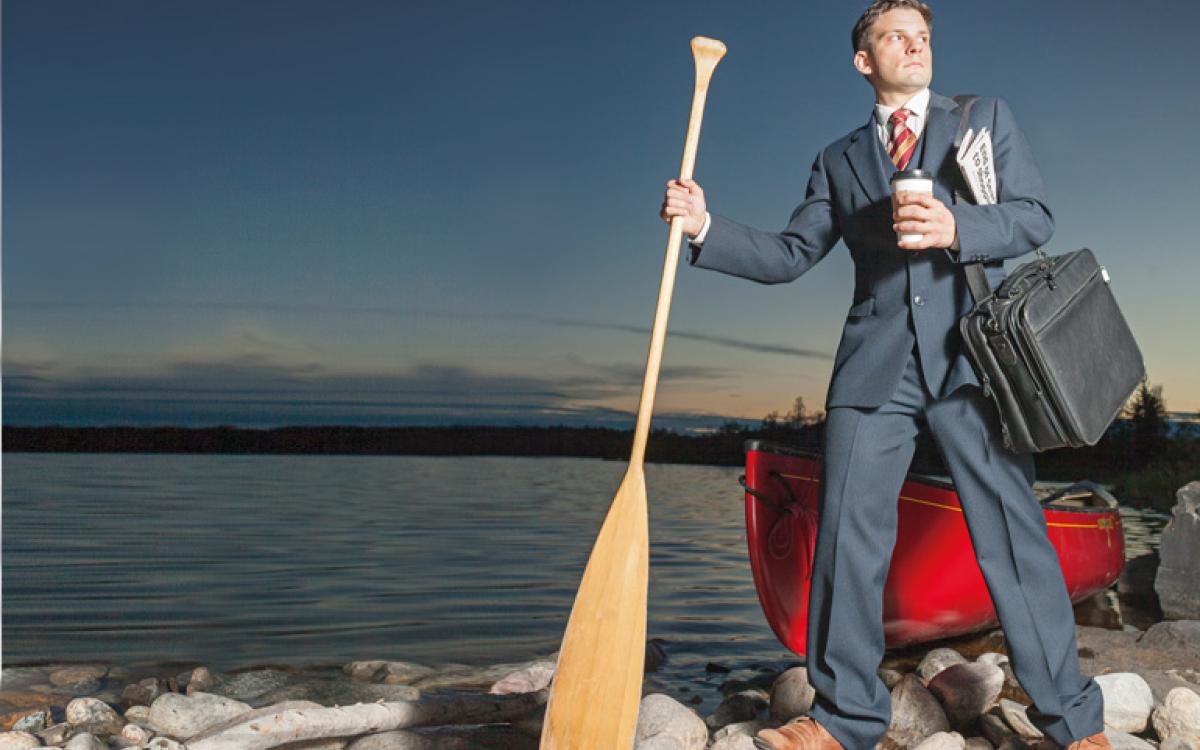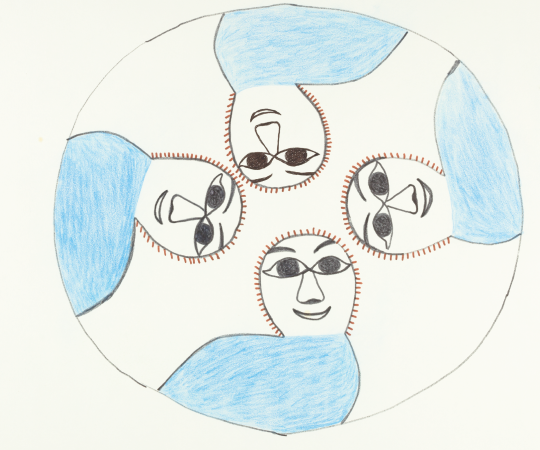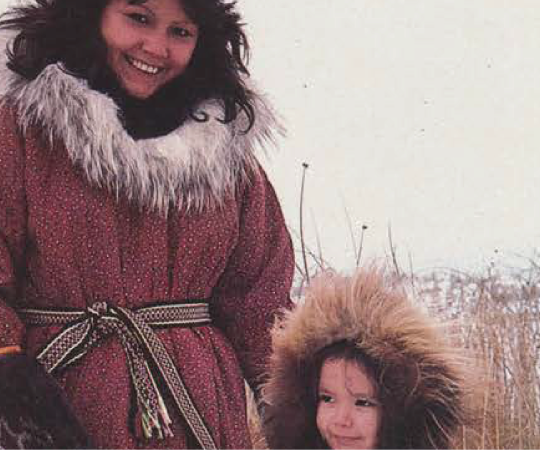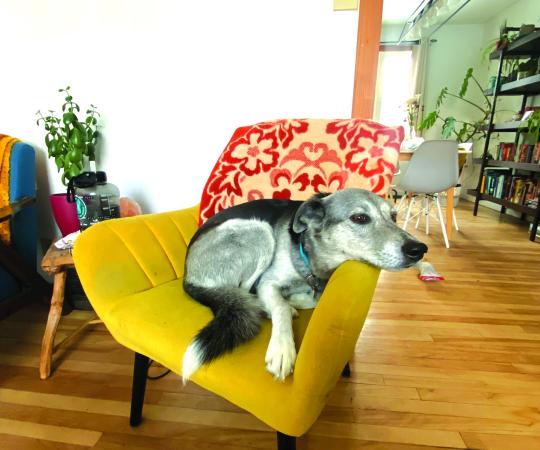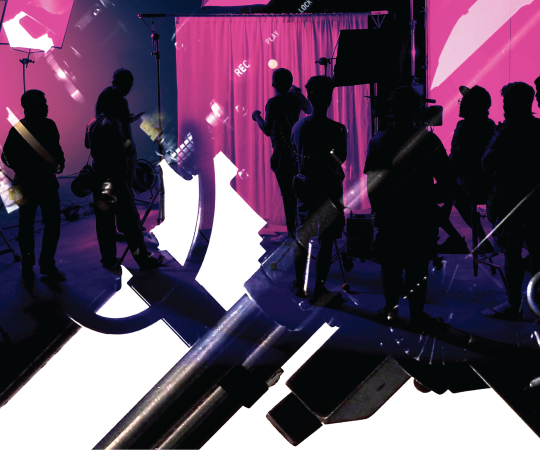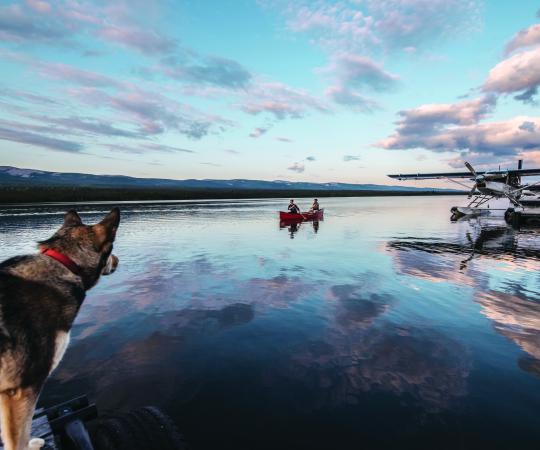WHITEHORSE
Whitehorse might be for you if...You love the wilderness but can’t kick your latte habit. You have a closet full of Gore-Tex, merino and Smart Wool. You can’t imagine a life without access to the open road.
Ah, Whitehorse. When I first flew in for a visit, just over six years ago, my expectations were vague: I’d never been North—or spent much time west of Saskatchewan for that matter—before. But whatever hazy picture I envisioned definitely involved the words “rough” and “frontier.” I pictured grizzled miners, not bearded lumbersexuals. I was in for a surprise.
In the battle of the capitals, Whitehorse is sometimes derided as “Vancouver North,” a pampered town that has lost some of its frontier edge. And it’s true that southern hipsters are migrating to the Yukon right alongside the newly arrived mule deer and mountain lions. In the last year or so alone, the largest territorial capital (population 23,276) has seen the arrival of a high-end cocktail bar, a tapas joint, and a teahouse, and most recently, a specialty cheese place.
But what’s wrong with embracing a few of the finer things in life? Whitehorse is only following in the footsteps of the Yukon’s first capital, Dawson City: the Gold Rush boom town had working electric lights before many major North American cities, and in the bad old days its residents paid in gold dust for every luxury on offer.
So bring on the artisanal tacos and the gourmet grilled cheese sandwiches. If you want to drink a locally roasted espresso before heading out into the mountains for the day, then Whitehorse is the capital for you.
[[{"fid":"1825","view_mode":"default","fields":{"format":"default","field_file_image_alt_text[und][0][value]":"","field_file_image_title_text[und][0][value]":""},"type":"media","attributes":{"alt":"This could be you, after work, every day, all summer long. Photo Dan Barham","class":"media-element file-default"}}]]
Playing outside: Despite all the jokes about the city’s soft southern comforts, it’s the surrounding wilderness playground where Whitehorse really shines. Residents can kayak, canoe, or raft in lakes, on rivers, and in full-blown, world-class whitewater. Mountain biking has exploded, and road cycling is still holding its own. There’s rock climbing in summer and ice climbing in winter; the long cold months also mean access to an extensive network of groomed cross-country ski trails, a modest ski hill, and—for the more adventurous—alpine touring in the White Pass backcountry. Want to try kite-boarding? Go for it. Stand-up paddleboarding? Whitehorse has that too. Hiking routes are everywhere. A sailing club is just getting on its feet. Motorheads can ride ATVs, dirt bikes, and snowmobiles on designated trails.
Playing inside: There’s indoor hockey, broomball, basketball, soccer and ultimate frisbee in the winter. There’s a roller derby team and an active squash league, and you can try underwater hockey or kayak polo. The Canada Games Centre offers indoor turf, a hardwood gym surface, a track, a swimming pool and two sheets of ice, plus cardio, weights, and various fitness classes. Several yoga studios have sprung up in town, and membership in the Alpine Club of Canada’s Yukon section gets you occasional access to the bouldering wall at Yukon College.
Eat, drink and be merry: By Northern standards, residents of the Pale Pony have a cornucopia of drinking and dining choices. There are five major grocery stores and a handful of specialty shops. Vegetable-eaters can join a CSA or plant their own in a plot at the community gardens. Several butchers and fishmongers offer local protein, and two craft breweries, two distilleries, and two coffee roasting companies provide beans and brews. A half-dozen independent coffee shops are supplemented by two Tim Hortons and two Starbucks locations. Beer, wine and spirits are available at a government-run liquor store or—at a steep markup—from an assortment of off-sales locations. Bars run the gamut from basic sports-focused pubs to a specialty place selling $14 cocktails. There’s a, uh, lively live music scene, with local and visiting acts on stage at multiple venues most nights. As for the restaurants? Quality is uneven, but the offerings are impressively varied. Whitehorse residents can go out for Chinese, Japanese, Vietnamese, Mexican, Caribbean, or Italian and Greek food—and that’s not even counting the half-dozen food truck offerings.
All in the family: Whitehorse parents and kids have plenty of choices when it comes time to start school. Beyond the standard English offerings, there’s a French Immersion school, an all-French school—currently embroiled in a legal battle about who’s permitted to attend—and a long tradition of public Catholic education, too. The Wood Street School offers a popular program that integrates sciences and outdoor education, and several schools offer First Nations language classes. Whitehorse schools have some of the best teacher-student ratios in Canada. Outside of the classroom, youth sports facilities and training are particularly well supported.
Get a job: As of June 2015, the territory-wide unemployment rate is sitting at 8.3 per cent. That’s a steep increase since June 2014, when it was a mere 3.9 per cent; a small population can result in some startling statistical swings, and the variations are seasonal, too. But wages are high—average weekly earnings in the territory consistently land about 10 per cent higher than the nationwide average. The assumption tends to be that there’s work to be had for those who want it. Nearly 30 per cent of Yukoners work for the federal, territorial, municipal or First Nations governments. The trades, transportation, mining and oil and gas, food services, education, and health care sectors also do their share of hiring.
Signature getaway: In the Yukon, unlike across most of the North, the road trip lives. Whitehorse residents can drive to the delights of Skagway, Alaska, in two hours, and Haines, AK, in four. Beautiful Atlin, B.C., is three hours away, and you can make Dawson City in six. Farther afield is the whole Alaskan road network: Yukoners can and do drive to Denali National Park, or to big-city Anchorage, or down to the Kenai Peninsula to fish for salmon and halibut. Life in much of the North can be similar to island living: there’s a certain bunker mentality to a place that you can’t easily leave. Whitehorse, for good or ill, doesn’t share that same sense of isolation.
Downsides: Whitehorse sprawls. Outside of downtown and a few nearby neighbourhoods, it’s a car-centric place—“country residential” subdivisions spread out along the Alaska Highway north and south of the heart of the city, and many residents have a 20, 30, even 45-minute commute each way.
YELLOWKNIFE
Yellowknife is for you if...Your love of the outdoors faces stiff competition from your love of stiff drinks. You don’t mind that your southern friends never quite figure out where you’ve moved to (“The Yukon, right?”). You’re not scared of swimming with giant pike.
People fall in and out of love with Yellowknife at the drop of a dime. It’s expensive to live here, small enough that gossip spreads like wildfire and it’s almost impossible to find romance without first maneuvering some complex love triangles. But it’s astoundingly beautiful, its people love easily, and no one judges you too harshly because oftentimes they’ve embarrassed themselves far worse at 1 a.m. on The Raven’s dancefloor.
If you have a love for outdoor activity, that’ll bode well for you here. Otherwise, you’ll end up watching reality TV, growing a beer gut, and complaining about the temperature, the sunlight (too much! too little!) or the lack of takeout options. Don’t be that person.
Otherwise, soak in the midnight sun and the culture—Yellowknife is an international community, where you’ll meet not only people from all over the world, but Dene, Métis and Inuit from all over the North.
Playing outside: Yellowknife runs along the shores of Great Slave Lake’s north end, and extending for hundreds of kilometres in any direction are innumerable rivers and lakes among pristine wilderness. Whether you want to hop in a canoe, kayak or motorboat and head out from the city, or get dropped off somewhere in a floatplane, there is more to explore around Yellowknife (and throughout the NWT) than one person could exhaust in a lifetime.
If you’re into outdoor sport—bicycling, hunting, fishing, climbing, snowshoeing, skiing, snowmobiling, BMX, skateboarding—you’ll find welcoming, strong (and sometimes competitive) subcultures in Yellowknife. Paddleboarding has just arrived here in a big way, and kiteskiers—majestic and mysterious—fly across Yellowknife Bay’s houseboats and beyond in the winter.
If you’re not into extreme or adventure sport, there are plenty of amateur leagues. In the winter, you’d be hardpressed to find a better hockey town—there are shinny rinks everywhere. One is two minutes from my office, smack dab downtown. And each of them is either maintained by the City or by a dedicated group of players.
[[{"fid":"1826","view_mode":"default","fields":{"format":"default","field_file_image_alt_text[und][0][value]":"","field_file_image_title_text[und][0][value]":""},"type":"media","attributes":{"alt":"In Yellowknife, everything is within walking (or paddling) distance. Photo Jiri Hermann/Up Here","class":"media-element file-default"}}]]
Playing inside: You might be surprised at our glut of recreational facilities, and if you read the local paper’s letters section, so are some of the more curmudgeonly taxpayers. But we really have a wealth of options. The Multiplex hosts two ice rinks—one NHL-sized, the other Olympic-sized—as well as a gymnasium and a gymnastics facility. And just a stone’s throw away is the fieldhouse, with two indoor multi-sport fields and a running track circling them from above. (And the pool is especially popular in winter.)
Eat, drink and be merry: Yellowknife’s nightlife: you either love it, hate it, love it then hate it, or hate it then love it. Or hate it AND love it. What I’m trying to say is the bars are a big part of the city. Each brings something of its own to the table. The Black Knight Pub might be the first place you go. It’s a popular haunt, and fills up with government workers so fast on Fridays that you wonder who’s running the territory. The Raven (we call it the Dirty Bird) is our club—those of us who grew up here—and you might not feel old there if you’re under 24. The Gold Range is almost a religious institution—ritualistically, at around midnight, partiers of all stripes and (legal) ages file in to two-step to live music in the historic watering hole. Harley’s Hard Rock Saloon is the only strip club in Canada North of 60—it has a singular charm, and its clientele have a lot of stories. The Monkey Tree is another popular spot to dance, and you can catch sports on its many TV and projector screens. Boston Pizza is the only downtown sports bar at the moment (they also have nightly drink deals), and the Cellar is a good place to catch live music. Play darts? Hot Shots. Play pool? After 8 Pub.
Me? Well, I like to grab a six-pack and meander into the wilderness with some friends to have a bonfire. You get paid pretty good up here, but beer and food in the bars doesn’t come cheap.
Our music scene has its ups and downs, depending on who’s in town, but it has produced some amazing local artists. Punk was huge for a while, then indie folk, electronica, and now the scene can be hard to classify—although there have always been fans of old-school country music (think George Jones and the original Hank Williams), especially among the city’s old-timers. And if you want to start or join a band, there are plenty of people around who do as well. (Bonus points if you’re a drummer.) There are also decent storytelling and slam poetry scenes, and if you like to volunteer, you can pretty much keep yourself busy every night of the week.
All in the family: Yellowknife has modern, well-staffed schools whether you want to enroll your child in the French, Catholic or public system. Depending on what school your kid goes to, they might pick up a bit of Tłı̨chǫ, or Chipewyan. The sports world is a ride, here—if your child is serious about playing soccer, hockey or basketball in school, they’ll have the teachers, competition and legacy of success to take them far.
Get a job: Employment has seen better days in Yellowknife, but you can get the job you want if you first take the job you can get, and then wait. A large segment of Yellowknife’s population is transient—people come here to make money (the wages are high) and then head back south. The restaurants and bars are almost always looking for wait staff, and good buskers do well outside the liquor stores.
Signature getaway: The Ingraham Trail is a road that takes you from downtown Yellowknife to a number of surrounding lakes and hikes, with some trails more clearly marked than others. Drive anywhere from 15 minutes to an hour for access to dozens of lakes, where many locals have their cabins. If you haven’t been invited to one yet, simply pick a lake, drop in your vessel and go for a paddle, cast a line and catch your shorelunch. If it’s winter, bring your skis or a snowmobile and carve out your own trail.
Downsides: If you want to leave the territory to visit family or go on vacation, the airfare isn’t cheap—and the nearest big city, Edmonton, is at least a 16-hour drive away.
Oh, and we should talk about real estate. It’s expensive to buy here, and expensive to rent (and then bank-breakingly expensive to heat your place through the winter). Condos have been popping up the past few years, but they don’t seem to affect prices. If you want to open a business, commercial rents downtown are notoriously high. And our downtown isn’t exactly vibrant these days—the only mall is dotted with empty storefronts, and there certainly aren’t the boutique shopping options Whitehorse residents are privileged to have. But that’s where you come in—Yellowknife has a lot going for it, but it needs some entrepreneurial spirit to bring it to the next level.
IQALUIT
Iqaluit is for you if...Hours spent meticulously recreating a McDonald’s menu is better than actual McDonald’s. You never grow tired of telephone customer service reps asking: “Um, can you spell that?” Making a scene doing a year’s worth of shopping down south won’t bother you.
In the battle of the Northern capitals, Iqaluit—this summer anyway—is like an embattled but resilient contender. Cold weather spelled snow in July and endless fog turned away flights for more than a week, stripping stores of fruits and veggies. A half-melted Frobisher Bay also choked boat and snowmobile traffic out of town and brought roving polar bears in. Last summer wasn’t any better. Iqaluit made international headlines as a dump fire blew garbage smoke for months. Whether the hardships are natural or man-made, the smallest, most isolated territorial capital tests newcomers. Long-time Iqalungmiut have weathered it all; in many ways it’s what unites us. When it is summer in calendar-only, those who live in and love Iqaluit simply turn their attention elsewhere. Who cares about a little fog when there are rivers to be fished, ice floes to be hopped, and a Legion to dance in all night long?
Playing outside: I usually sell Iqaluit on its unbridled freedom. Where there is a Road to Nowhere, there are roads to anywhere and everywhere. In winter, the infinite cookies-and-cream rolling hills are a cross-country skier’s dream. In summer, the land is dotted with berry-pickers and dog-walkers. Carvers are an all-season bunch, grinding soapstone or antler or bone and covered in dust on makeshift outdoor tables. Summer is such a lively time for Iqalungmiut that civic expectations are lowered; even courts don’t book trials since everyone is out on the land.
Of course, Iqaluit has more Arctic char than you can shake a lure at, and a $10 fishing licence is all you’ll need. If you’re more of a ‘take nothing but pictures’ person, its public art and murals, endless sunsets and regular aurora can make ordinary walks seem magical. Add to this ravens the size of small dogs, occasional sightings of foxes and Arctic hare, and knowing wolves and polar bears are never too far from the city, and you’ve got Instagram gold.
Playing inside: Iqaluit has a lot going on for the involved newcomer. Volunteers are always needed to help cook up good meals at the Qayutivik Society’s soup kitchen, or walk dogs at the Humane Society, or mix a batch of compost for the local greenhouse. Intramural sports—broomball, hockey, soccer—abound. Pickup games of basketball take place free weekly at the high school, and the local ski club offers free cross-country ski rentals and group trips out on the sea ice.
Eat, drink and be merry: These recommendations are highly subjective and all over the place. Try: hot-and-sour soup at the Nav; muskox Ossoboco at the Frob; nachos at the Nova; char and brie pizza at Grind and Brew; baked goods at I Like Cake; Panini creations at Baffin Deli; Legion (“Leedge”) poutine; freshly flown-in samosas at the airport; simultaneous Wednesday Wing Night at the Storehouse (Stoho) and Leeg; Sunday brunch at the Discovery Hotel (“the Disco”); and, 24/7 burger delivery from the Snack.
Iqaluit’s nightlife and live music scene is nascent but growing. There aren’t many bands in town, but the Alianait Arts Festival does a good job bringing in big-name artists and putting on all-ages shows. The Legion’s Quiet Lounge is the most regular venue for live music but the Stoho is beginning to do more events. The Navigator (“Nav”) and Nova also feature weekly open mics, so Iqaluit’s next musical sensation could be you.
The city changes markedly at Christmas when many southerners head home. Those who stick around are invited to Inuit games and community feasts of frozen caribou (tuktu) and char (iqaluk) and without a doubt, the most special meal you will have in Iqaluit.
All in the family: While I am without family to raise, friends lament that the educational system in Nunavut has an ‘un-failable’ stance on student grades and attendance, generally (but not officially) recognized as social passing or promotion. Otherwise it’s great. Many hyperactive teachers and principals host after-school activities. Clubs abound at the youth centre and the City’s recreation department does a good job organizing sports and outings. Ultimately, your kids will benefit from exposure to a new language, culture and skills like throat-singing or drum-dancing.
But holy hell the weather. Schools, daycares and workplaces close at least a half-dozen times a year due to whiteouts and wind-chill, so families adapt, spending probably as much time indoors as out. That invariably builds into a humour and attitude that in many ways defines Nunavummiut, making the most of clear skies however long they last, and learning to love cozy days in when the weather won’t let you go.
Get a job: Nunavut’s capital seems to be mostly a career-starting destination for most newcomers—teachers, nurses, environmental scientists, all sorts of engineers and journalists. They come here, I’m assuming like me, for a place that offers equal parts fascination, challenge and reward—both financial and social. They also drive taxis or conduct seasonal research or work for the Government of Nunavut, which is never referred to as anything else than “the GN” and is the largest employer. Basically everywhere you go there are grads and post-grads starting their professional lives.
Signature getaway: The two most trodden trails nearby are Pang Pass (by foot) in summer and Kimmirut Trail (by snowmobile) in winter. Neither is the kind to take lightly or alone. Iqaluit’s nearest community is Kimmirut. A pretty well-trafficked snowmobile trail connects the two communities in a winding and scenic route that gains elevation and should be done before the Soper River begins to run. Pang Pass trailheads are a short flight away in Pangnirtung or Qikiqtarjuak. For all year-round activities, Sylvia Grinnell Territorial Park and out on the bay—open or frozen—are good spots for kite-skiing, dog-sledding, tundra-cizing (my personal fave) or what have you.
Downsides: The first three pieces of advice I give people about moving here usually fall under the “no’s”, “not yet’s” and “not really’s.” First the no’s: no trees. No stop lights. No roads out. The Road to Nowhere really is a road to nowhere. No bars open on Sunday; I don’t know if that’s an all-North thing or just a Nunavut thing (Ed: It is, thanks to newly relaxed NWT rules). Regarding access to alcohol there are no liquor stores, although the territorial government may soon open a pilot beer and wine store. There is not yet fast, reliable Internet, so the smartphone/Wi-Fi-addict may find Iqaluit—as metropolitan as it may feel at times—a little trying. There is not really a cheap way to fly in and out of Iqaluit, but airline seat sales are common, so be ready to pounce.

